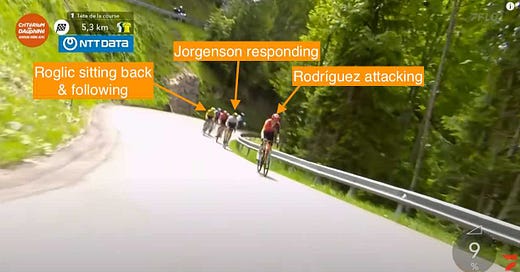Key Takeaways: Critérium du Dauphiné Final Weekend
Breaking down what the final weekend at the eight-stage Critérium du Dauphiné tells us about the upcoming Tour de France
At last weekend’s Critérium du Dauphiné, Primož Roglič racked up his first GC victory on his new BORA-hansgrohe team, with Visma-Lease a Bike’s ascendant American coming in second and Israel-Premier Tech’s Derek Gee putting in the ride of the week to come out of the stage racing woodwork to finish third. With the Dauphiné, due to being set in the Rhône-…
Keep reading with a 7-day free trial
Subscribe to Beyond the Peloton to keep reading this post and get 7 days of free access to the full post archives.



